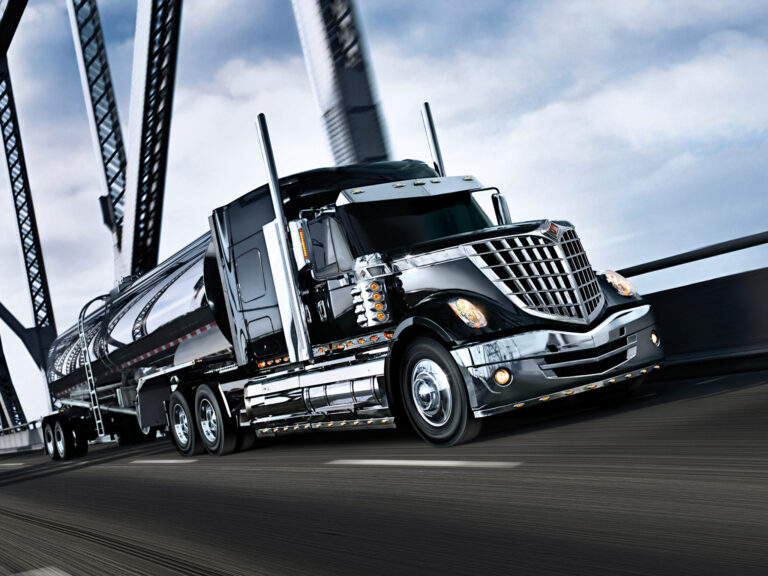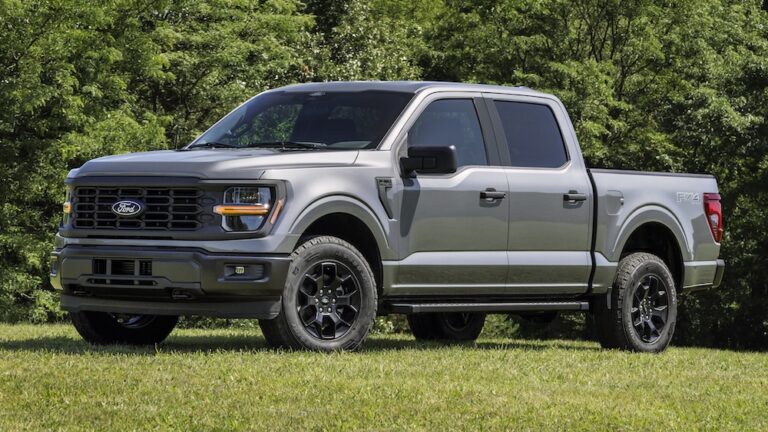Old Lifted Chevy Trucks For Sale: A Comprehensive Buyer’s Guide
Old Lifted Chevy Trucks For Sale: A Comprehensive Buyer’s Guide cars.truckstrend.com
Introduction: The Enduring Appeal of Elevated Iron
Few vehicles command the same blend of nostalgia, rugged capability, and undeniable presence as an old lifted Chevy truck. These aren’t just mere conveyances; they are rolling testaments to American automotive history, symbols of freedom, and canvases for personal expression. From the iconic "Squarebody" C/K series to the beloved "OBS" (Old Body Style) pickups, these classic Chevrolet workhorses, when elevated by a well-executed lift kit, transform into formidable machines ready for the trail, the show, or simply turning heads on the street.
Old Lifted Chevy Trucks For Sale: A Comprehensive Buyer’s Guide
The market for old lifted Chevy trucks is vibrant and growing, driven by a passionate community of enthusiasts who cherish their robust construction, simpler mechanics, and timeless aesthetic. Whether you’re a seasoned off-roader, a classic truck aficionado, or someone looking for a distinctive daily driver, understanding the nuances of buying an old lifted Chevy is crucial. This comprehensive guide will navigate you through the journey, from appreciating their enduring appeal to making an informed purchase.
Why the Enduring Appeal? More Than Just Muscle
The fascination with old lifted Chevy trucks stems from a combination of practical benefits and an almost intangible allure:
- Nostalgia and Classic Style: For many, these trucks evoke memories of a bygone era. The clean lines of a Squarebody (1973-1987/91) or the familiar curves of an OBS (1988-1998/2000) are instantly recognizable and widely admired. They possess a character that modern vehicles often lack.
- Rugged Durability and Simplicity: Built with robust steel and often featuring straightforward mechanical systems, these trucks were designed to work and last. Their simpler designs mean fewer complex electronics, often translating to easier maintenance and repair for the DIY enthusiast.
- Off-Road Prowess: The primary functional benefit of a lift kit is increased ground clearance, allowing for larger, more aggressive tires. This significantly enhances the truck’s ability to tackle challenging terrain, whether it’s mud, rocks, or deep snow.
- Unmatched Customization Potential: Old Chevys are a blank canvas. Their aftermarket support is immense, allowing owners to personalize everything from engine performance and suspension geometry to paint schemes and interior comfort. A lifted stance further amplifies their custom appeal.
- Community and Culture: Owning an old lifted Chevy means joining a vast and active community. Truck shows, online forums, and local meet-ups provide opportunities to share knowledge, showcase builds, and forge friendships with like-minded enthusiasts.
- Potential Investment: While not guaranteed, well-maintained, tastefully modified, and rare examples of these trucks have shown a trend of appreciating in value, making them not just a hobby but potentially a shrewd investment.

Understanding the "Old Lifted Chevy": Key Models & Generations
When discussing "old lifted Chevys," several generations stand out as prime candidates:
- The Squarebody Era (1973-1987/1991 for K5 Blazer/Suburban): These trucks are arguably the most iconic for lifting. Known for their angular, utilitarian design, the C/K series pickups and the K5 Blazer (and Suburban) are highly sought after. Common engines include the venerable Small Block Chevy 350 V8, 454 Big Block, and various six-cylinders. Their robust frames and solid axles (in 4×4 models) make them excellent platforms for significant lifts.
- The OBS (Old Body Style) Era (1988-1998/2000 for Tahoe/Suburban): Introduced with a more aerodynamic and refined design, the OBS trucks quickly became classics. They offered improved ride quality and more modern interiors than their Squarebody predecessors, while retaining much of the same legendary durability. The 5.7L Vortec V8 is a common and reliable powerplant. These trucks also take well to lifting, offering a slightly more contemporary look with classic ruggedness.
- The GMT800 Series (1999-2006): While newer, these Silverado and Sierra trucks are rapidly entering "classic" territory. Their powerful LS-series engines, refined interiors, and coil-sprung front suspensions (on 2WD models, torsion bars on 4WD) make them comfortable daily drivers that can still be significantly lifted for an aggressive stance and improved off-road capability.
The "lifted" aspect refers to the installation of suspension or body lift kits. Suspension lifts raise the vehicle by modifying the suspension components (springs, shocks, control arms, etc.), increasing ground clearance and allowing for larger tires. Body lifts, on the other hand, raise the body of the truck off the frame using spacers, primarily for tire clearance rather than ground clearance. Many lifted trucks utilize a combination of both.
Where to Find Them: A Buyer’s Guide
Finding the right old lifted Chevy requires patience and a multi-faceted approach:
- Online Marketplaces:
- Craigslist & Facebook Marketplace: Excellent for local finds, often from private sellers. Be prepared to sift through many listings and act quickly on good deals.
- eBay Motors: Wider selection, but often includes national shipping considerations. Good for rare or high-value builds.
- Specialized Forums & Websites: Sites like CK5.com (for K5 Blazers), GM Truck Central forums, and dedicated classic truck sales sites often have active classified sections with knowledgeable sellers and buyers.
- Dealerships & Specialty Shops: Classic car dealerships or shops specializing in 4×4 and custom builds may have a curated selection. Prices will likely be higher, but vehicles might be reconditioned or come with some form of warranty.
- Auctions: For higher-end, meticulously restored, or custom-built trucks, automotive auctions (e.g., Mecum, Barrett-Jackson) can be a source, though competition is stiff.
- Word of Mouth & Local Shows: Attending local car shows, truck meets, and talking to enthusiasts can unearth hidden gems not advertised online.
What to Look For When Buying: Crucial Considerations
Purchasing an old lifted Chevy involves a unique set of inspection points beyond a typical used car:
- Rust: The Ultimate Deal-Breaker: This is paramount. Check common rust areas thoroughly:
- Frame: Look for pitting, flaking, or repairs. Structural integrity is critical, especially on a lifted vehicle.
- Cab Corners & Rocker Panels: These are notorious rust traps.
- Fender Wells & Bed Floor: Especially in trucks used for hauling or in harsh climates.
- Inner Fenders & Core Support: Often overlooked but prone to rust.
- Engine & Drivetrain:
- Leaks: Oil, coolant, transmission fluid, differential fluid.
- Noises: Listen for knocking, ticking, or grinding sounds.
- 4×4 Engagement: If applicable, ensure the transfer case engages smoothly in both high and low ranges.
- Transmission: Check for smooth shifts, proper engagement, and slipping.
- Differential: Listen for humming or whining, indicating wear.
- Lift Kit Quality & Installation:
- Brand: Reputable brands (e.g., Rough Country, BDS, Skyjacker, Rancho, Superlift) are preferred. Avoid homemade or poorly installed kits.
- Alignment: Look for uneven tire wear, which indicates poor alignment or suspension issues.
- Steering Components: Check tie rods, drag links, and steering box for excessive play. Lift kits often put more stress on these parts.
- Driveline Angles: Ensure proper pinion angles to avoid vibration. This might involve dropped transfer cases or shims.
- Brakes: Ensure larger tires haven’t overwhelmed the stock braking system.
- Suspension Components: Inspect shocks, springs, leaf springs, bushings, and control arms for wear, cracks, or damage.
- Tires & Wheels: Check tire condition, age, and ensure they clear the fenders at full lock and articulation. Oversized tires can be expensive to replace.
- Interior & Electrical: Test all lights, gauges, windows, HVAC, and radio. Look for water damage or excessive wear.
- Documentation: A clear title is essential. Ask for maintenance records, receipts for the lift kit, and any other modifications.
- Pre-Purchase Inspection (PPI): Crucially, have a trusted mechanic (ideally one familiar with classic trucks and lifted vehicles) perform a comprehensive PPI. This can uncover hidden issues and save you thousands in future repairs.
Potential Challenges & Solutions
While rewarding, owning an old lifted Chevy comes with its unique set of challenges:
- Parts Availability: Generally good for common mechanical parts, but specific trim pieces or specialized lift components might require diligent searching.
- Solution: Join online forums, connect with parts suppliers specializing in classic trucks, and consider reproduction parts.
- Maintenance: Older vehicles require more frequent and hands-on maintenance.
- Solution: Learn basic mechanics, invest in a good service manual, or find a reliable mechanic experienced with classic vehicles.
- Fuel Economy: Expect significantly lower MPG compared to modern vehicles, especially with larger tires and less aerodynamic profiles.
- Solution: Embrace it as part of the experience, or consider an engine swap for better efficiency if long-distance driving is a priority.
- Ride Quality: Lifted trucks, especially with aggressive suspension setups, can have a stiffer or bouncier ride than stock.
- Solution: Research lift kit types, invest in quality shocks, and consider air bag helper springs for adjustability.
- Insurance: Standard insurance might not fully cover highly modified vehicles.
- Solution: Look into specialized classic car insurance or agreed-value policies that cover modifications.
- Legality: Lift laws vary by state/province. Ensure the truck meets local regulations regarding height, tire protrusion, and fender flares.
- Solution: Research local laws before buying or modifying.
Price Table: Estimated Costs for Old Lifted Chevy Trucks For Sale
Prices for old lifted Chevy trucks vary wildly based on year, model, engine, condition, quality of the lift, and extent of other modifications. The table below provides a general range, emphasizing that these are estimates and not definitive prices.
| Model/Year Range | Condition Category | Estimated Price Range (Lifted) | Key Factors Influencing Price |
|---|---|---|---|
| Squarebody C/K Pickups | |||
| (1973-1987) | Project/Rough | $5,000 – $15,000 | Significant rust, non-running, incomplete, poor lift quality |
| Driver Quality | $15,000 – $35,000 | Running, minimal rust, decent paint, functional lift | |
| Show Quality/Restored | $35,000 – $70,000+ | Frame-off restoration, custom paint, engine swaps, high-end lift | |
| K5 Blazer / Suburban | |||
| (1973-1991) | Project/Rough | $6,000 – $18,000 | Similar to pickups, often higher due to SUV demand |
| Driver Quality | $18,000 – $45,000 | Well-maintained, functional, solid body | |
| Show Quality/Restored | $45,000 – $90,000+ | Top-tier builds, rare options, custom interior | |
| OBS C/K Pickups | |||
| (1988-1998) | Project/Rough | $4,000 – $12,000 | Minor issues, higher mileage, some rust |
| Driver Quality | $12,000 – $28,000 | Solid daily driver, good mechanicals, decent appearance | |
| Show Quality/Restored | $28,000 – $55,000+ | Pristine condition, engine upgrades, modern amenities | |
| OBS Tahoe / Suburban | |||
| (1992-2000) | Project/Rough | $5,000 – $15,000 | Similar to pickups, often slightly higher for SUV utility |
| Driver Quality | $15,000 – $32,000 | Reliable, clean interior, well-maintained | |
| Show Quality/Restored | $32,000 – $60,000+ | Custom interior, paint, engine work, updated suspension | |
| GMT800 Silverado/Sierra | |||
| (1999-2006) | Project/Rough | $7,000 – $18,000 | Higher mileage, cosmetic issues, basic lift |
| Driver Quality | $18,000 – $35,000 | Well-maintained, good running condition, quality lift | |
| Show Quality/Custom | $35,000 – $60,000+ | Extensive modifications, engine swaps, high-end wheels/tires |
Note: These prices are highly variable. A truck with a fresh, high-quality lift and new tires will command a higher price than one with an old, budget lift and worn-out rubber. Rust-free examples from dry climates are always at a premium.
Frequently Asked Questions (FAQ)
Q1: Are old lifted Chevys reliable as daily drivers?
A1: With proper maintenance and a thorough pre-purchase inspection, many old lifted Chevys can be reliable daily drivers. However, they will require more consistent attention than a modern vehicle. Expect more frequent checks of fluids, belts, and suspension components.
Q2: What’s the best year for an old lifted Chevy?
A2: There’s no single "best" year, as it depends on personal preference. Squarebodies (1973-1987) are highly desired for their classic aesthetic and rugged simplicity. OBS trucks (1988-1998) offer a more refined ride and modern conveniences while still being mechanically straightforward. GMT800s (1999-2006) provide modern power and comfort, but are just starting to be considered "old."
Q3: How much does it cost to lift an old Chevy?
A3: The cost varies greatly. A basic suspension lift kit can range from $500 to $2,000 for parts alone. Professional installation can add another $800 to $2,000+. High-end, complete suspension systems with coil-overs or custom fabrication can easily exceed $5,000-$10,000. Don’t forget the cost of larger tires, which can be $1,000-$3,000+.
Q4: Do old lifted Chevys get good gas mileage?
A4: No, generally not. Older engines are less fuel-efficient, and the added weight, increased drag from the lift, and larger, aggressive tires further reduce MPG. Expect single-digit to low-teen MPG figures, especially in city driving.
Q5: What are the most common rust spots to check?
A5: The most critical areas for rust are the frame rails, cab corners, rocker panels, fender wells, bed floor, and around the windshield and rear window seals. Always inspect underneath the vehicle thoroughly.
Q6: Can I find parts for these older trucks easily?
A6: For common mechanical components and many body parts, yes. Chevrolet trucks were produced in high volumes, and the aftermarket support is excellent. However, specific trim pieces or unique components for certain models/years might require more searching. Online forums and specialized classic parts suppliers are invaluable resources.
Conclusion: Embracing the Elevated Journey
Owning an old lifted Chevy truck is more than just a means of transportation; it’s an immersive experience. It’s about the rumble of a classic V8, the commanding view from the driver’s seat, and the satisfaction of piloting a machine with true character. While the journey to finding the right one requires careful consideration of rust, mechanical condition, and the quality of the lift, the rewards are immeasurable.
By leveraging online resources, seeking expert advice, and conducting thorough inspections, you can confidently navigate the market for old lifted Chevy trucks. Embrace the challenges, celebrate the unique appeal, and prepare to join a passionate community. Your elevated adventure awaits, ready to tackle any road or trail that lies ahead.



